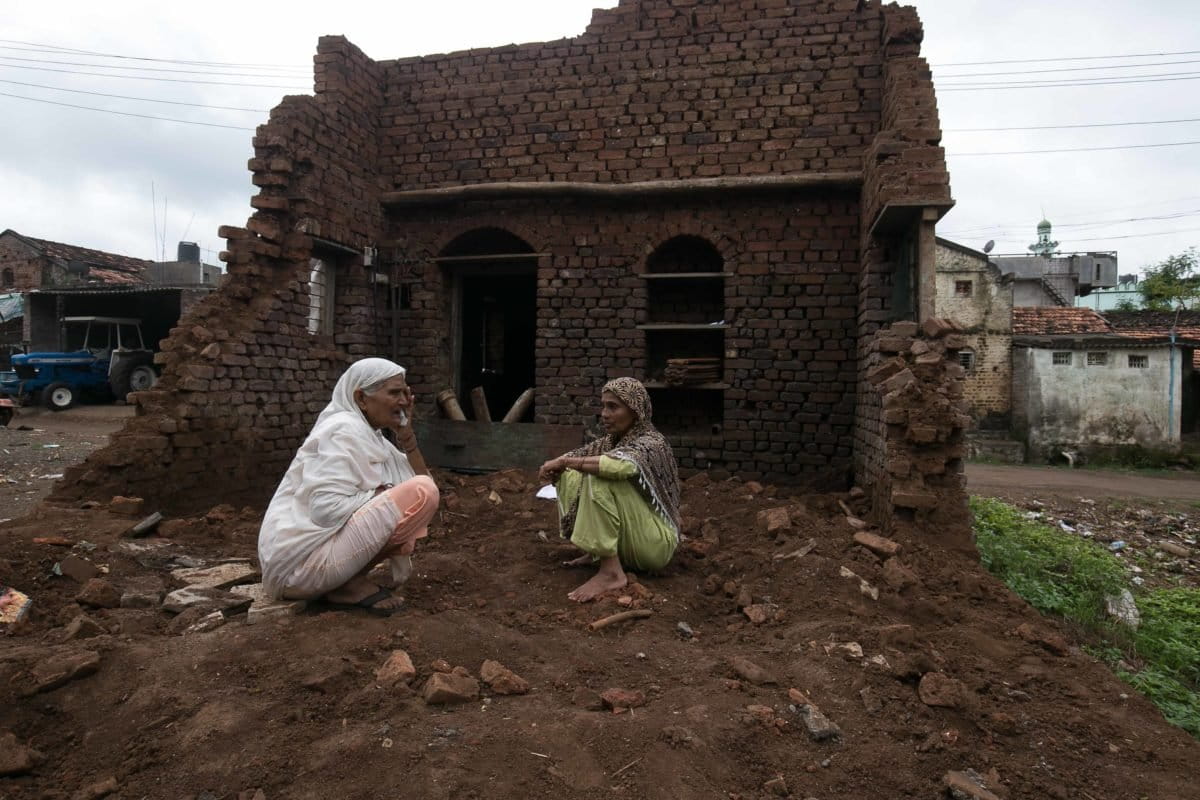@AbhijeetGurjarP
Farmers living along the Maharashtra-Karnataka border with homes in one state and farmlands in the other were impacted by the 2019 floods in western Maharashtra and their situation was aggravated as their lives straddle two states.
With Karnataka offering better compensation for flood-affected villages, the farmers want the Maharashtra government to step up its compensation or incorporate their villages within Karnataka.
Climate change-affected monsoon pattern, unusual rainfall, lack of coordination of overflow of dams, encroachments and tampering of technically established flood lines are some of the reasons attributed to the 2019 floods in western Maharashtra.
Ganeshwadi is the last village of Shirol taluka in Kolhapur district on the border between Maharashtra and Karnataka. Many farmers from Ganeshwadi and other villages in Shirol straddle between the two states with a home in Maharashtra and agricultural land in Karnataka.
As monsoon hits the western Indian state, floods regularly follow in Shirol. There has been a flood in Shirol every year, with major floods in 1914, 1989 and 2005. In 2019, the floods were at a much larger scale than before. The taluka has 55 villages, among which 43 are 90 percent flood-affected while seven villages face the maximum impact, becoming islands during floods.
For the farmers here, the impact of the flood is further aggravated by state compensation policies that differ across the border. Karnataka offers better compensation for flood victims, they say, which these farmers, with agricultural land in Karnataka, cannot benefit from as they reside in Maharashtra.



The Krishna river unites with the Panchganga river close to the border at Narsinhwadi and then further flows to Karnataka where it meets the 524-metre Almatti dam (524 metres and 200 TMC capacity and if filled up to 519 metres 123 TMC capacity) which is the first dam as the river enters Karnataka, located at Nidgundi, Bijapur district. This dam is also known as the Upper Krishna River Project with backwaters in Bagalkot district of north Karnataka. The swelling of these backwaters is a major reason for the floods in 2019. Major parts of those districts were paralysed as the national highway, railway, internal roads were under floodwater for more than eight days in August 2019. Damage to homes, agriculture as well as industrial damage was also observed.
The flood-hit villages have been demanding better compensation from the Maharashtra government; in lieu of which they want their villages to be incorporated within Karnataka. They say the Karnataka government offers better compensation to each affected family residing in the state compared to Maharashtra, specifically in terms of compensation for collapse and damages to homes. The agricultural assistance per hectare, loan waiver and relief in electricity bill and taxes are also better in Karnataka, when compared to Maharashtra’s compensation, claim the farmers.
Comparison of compensation between two states

In September of last year, the villagers of the seven most-affected villages from Shirol taluka carried out a protest march demanding full compensation or being connected to Karnataka. While surveys in both states have been carried out, the complete compensation was yet to be doled out, as of December 2019.

Major reasons attributed to these floods have been climate change-affected monsoon pattern followed by unusual rainfall, missing coordination of overflow of two dams Koyana and Almatti, increased height of Almatti, encroachments in redline zone and tampering of technically established flood lines in urban areas.
A technical study to look into the causes of the 2019 floods is being carried out by a committee appointed by state government of Maharashtra in August last year, which is headed by ex-principal secretary of irrigation department, Central Water Commission, the Indian Meteorological and researchers of IIT Mumbai and other experts.





I loved the wit in this piece! For more on this topic, visit: EXPLORE FURTHER. Keen to hear everyone’s views!